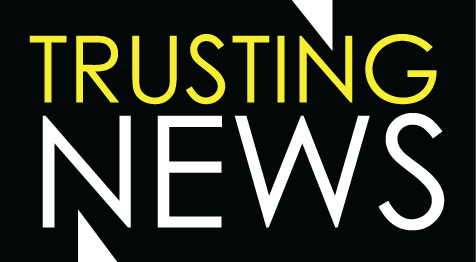Bias and Fairness
Milwaukee Journal Sentinel uses Instagram to explain shooting coverage
News Tribune editor responds to comments
Tennessean fact-checks local TV station
FiveThirtyEight’s disclaimer about polls
PEN tip sheet for discussing misinformation
Green Bay Gazette letter to the editor process
Colorado Sun explains approach to 2020 election coverage
Trust Tip #83: Create an FAQ about your elections coverage
Trust Tip 82: If your coverage is nonpartisan, explain and defend that
Trust Tip 76: Take extra care when covering conspiracy theories (and tell your audience)
Coloradoan explains bias toward facts
Florida Today explains validity of SpaceX photo
WCPO shares station’s commitment to community
KPRC asks for reader questions
AJC explains reporting process, context
NewsChannel 5 shows transparency admitting bias in Facebook posts
WEWS combats misinformation about COVID-19 deaths
ProPublica transparency around fair news
Trust Tips 67: Demonstrate visual balance in political coverage
Atlanta Journal-Constitution on covering legislature
Tennessean editorial board describes decision process
Atlanta Journal-Constitution on covering Georgia’s Legislature
Atlanta Journal Constitution front page
WCPO explains how their COVID-19 coverage different from competitors
Spokesman-Review explains newsroom processes, ‘fake news’
Trust Tips 63: Demonstrate that your visuals aren’t manipulated
San Fransisco Chronicle explains endorsements
How the San Fransisco Chronicle cover candidates
Trust Tips 62: Tell your audience that COVID-19 information might change
Caller-Times explains coverage
WTXL shuts down mugshots page
Toronto Star creates new labels for opinion content
NPR changes design for labeling opinion stories
Philadelphia Inquirer labeling opinion content
Herald and Review uses Twitter thread to highlight best journalism
Globe and Mail form for errors, corrections
Trust Tip 61: Do these four things right now to show you are trustworthy
National Geographic combats spread of “fake news”
Trust Tip: Tell your audience you won’t tolerate misinformation
WMAR explains Coronavirus reporting process, asks for feedback
Trust Tip 56: With coronavirus coverage, make your purpose clear
Trust Tips 49: Explain that some journalists are biased on purpose
Trust Tip #47: Tell your audience what you think of “fake news”
Trust Tip 45: Show how your staff covers big news
Caller Times explains opinion vs. news content
Trust Tip 40: Explain where opinion content comes from
Trust Tip 22: If you publish a graphic image, explain why
Trust Tip 14: Address “fake news” complaints
Trust Tip 11: Explain how breaking news works
Trust Tip 10: If you strive for fairness, tell your audience
Address Fake News Concerns by Reporting On the Topic
Using Facebook Comments to Defend Your Journalism
WCPO Uses Facebook Comments to Ask for Feedback
ENID Uses Facebook to Introduce New Columnists
Jefferson City Uses Newspaper Page Layout to Demonstrate Balance
Jefferson City Shows Balance with an Editor’s Note
USA TODAY Uses Twitter to Share Opposing Viewpoints
USA TODAY Use Facebook to Bring Opposing Viewpoints to Users
Discussing Selection of Editorial Content on Facebook
Explaining Word Choice and Asking for User Feedback
Video: How to Submit a Letter to the Editor
Explaining Comment Policies
Explaining Your Election Coverage Mission
Asking if information was “helpful” or “not helpful”
Linking Coverage Online
Linking Opposing Viewpoints Online
Highlighting Variety of Coverage Online
Creating Story Pages Online to Link Coverage
Using a Pro/Con List to Highlight Balanced Coverage
Looking at Bias and Asking for Feedback
Always Looking for Different Perspectives
Do you Trust Us?
Explaining Coverage Decisions with Editors Note
Celebrate Your Journalism
Explaining Coverage Decisions Using Facebook
Speaking Out Against “Fake News”
Explaining Coverage on Divisive Issues Jefferson City
Anticipating Negative Feedback and Addressing it Directly
Discussing your Commitment to Earning User Trust
Discussing Your Core Beliefs
Distinguishing Your Coverage from National News
Explaining Your Editorial Process
Sharing Your Approach to Trust
Talking ownership and ethics at KCRG
Explaining News Coverage Decisions: Suicides
Defending News Coverage Decisions to Facebook Users
Explaining Opinion Coverage
Explaining Opinion Coverage Using Facebook Live
Talking about Journalism
Discussing Story Selection
Responding to User Criticism by Adding an Editor’s Note
Explaining Your Reporting Process
Being Honest About Holes in News Coverage
Explaining Coverage Decisions on Facebook: Crime
Explaining Coverage Decisions: Crime
Responding to Critical Facebook Comments
Explaining News Coverage: Guns
Explaining Coverage Decisions: Officer Involved Shootings
Emphasizing transparency at WCPO
Highlighting an investigation at WITF
Sharing social strategy at WITF
Handling a sensitive story at WITF
Explaining the editing process at WITF
Hashtagging story types at The Virginian Pilot
Highlighting Multiple Perspectives Using Pull-Out Box

